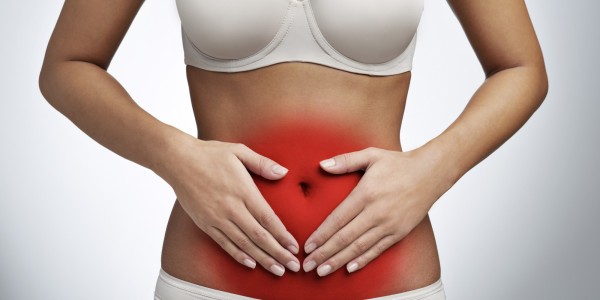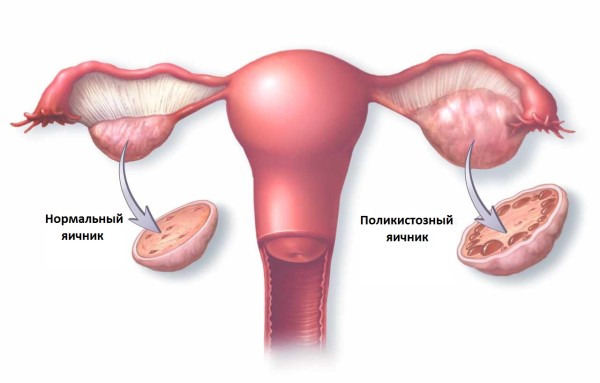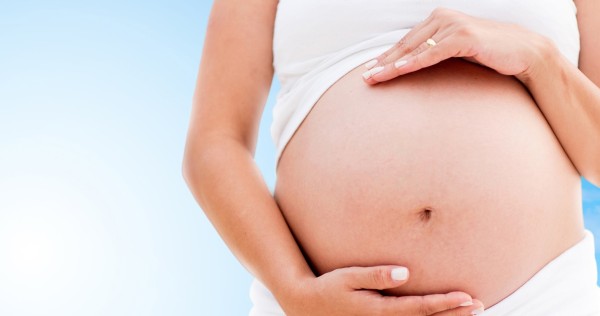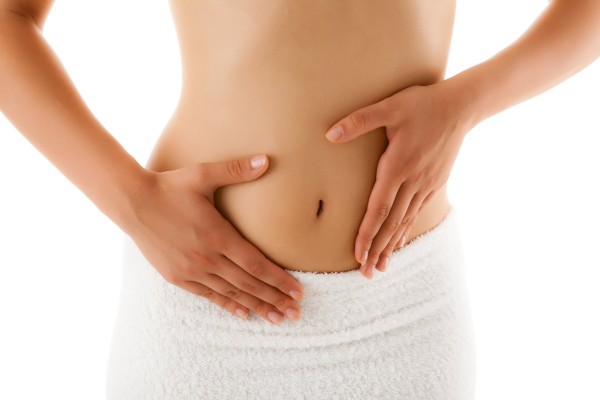Polycystic ovary disease: causes, symptoms and treatment
Due to polycystic ovary disease, a woman often develops infertility. But the disease is diagnosed less often, in about 4-8% of cases in patients aged 20 to 35 years. Polycystic ovary disease is a serious disease that in no case should be started in order to subsequently give birth to healthy offspring. The sooner treatment is started, the greater the chances of recovery without complications and consequences.
Content
Causes of polycystic ovary
Born girls with a predisposition to polycystic disease may appear in women who have suffered the following diseases in the past before pregnancy or childbirth:
- infertility;
- miscarriage in previous pregnancies;
- hormonal abnormalities.
It is hormonal disorders that can be inherited by newborn girls from their mothers, which can subsequently result in polycystic ovary disease. Other reasons for the emergence of a predisposition to this disease can be infectious diseases transferred in childhood, in particular mumps or, in other words, mumps. In adulthood, the onset of polycystic disease is facilitated by endocrine disorders, which can be complicated by severe pregnancy or childbirth, head injuries, neuroses or intoxication.
In 40-70% of sick women, the pathology manifests itself against the background of a decrease in sensitivity to such a substance as insulin. It is this hormone secreted by the pancreas that controls the amount of sugar in the bloodstream. As a result, a lot of insulin penetrates into the blood, and androgens are synthesized in a huge amount in the ovaries - male sex hormones. It is these sexual dysfunctions that lead to irreversible consequences.
The outer shell of the ovaries becomes much thicker, mature follicles are not able to break down normally to create an egg, as a result they are filled with unnecessary fluid. That is, they turn into cystic formations. Polycystic ovaries become larger in size due to multiple cysts. In addition, malfunction of the hypothalamus and pituitary gland can lead to such violations. Which also leads to increased production of androgens.
The following diseases can lead to polycystic disease:
- diabetes;
- problems with the adrenal glands;
- obesity.
The hereditary factor can also play a role. As a conclusion, we can say that hormonal disruption in the body lies at the heart of such a pathology of the ovaries.
Symptoms of polycystic ovary
There is no definite symptomatic specificity of the disease. All manifestations of polycystic ovary disease are similar to other hormonal disorders. The symptoms are different for everyone. Someone with their first menstruation, others with subsequent cycles, even after a few years.
Clinically, the disease manifests itself as follows:
- Enlargement of the ovaries in size.
- No history of pregnancy.
- The development of oligomenorrhea and amenorrhea (a long break between periods, their scarcity, or vice versa abundance).
- A set of extra pounds.
Against the background of rare menstruation, infertility develops or ovulation practically does not occur. Due to the high content of androgens in the blood, a woman develops hirsutism, that is, strong hair growth. Hair grows mainly in the lower leg area, on the inner thighs, in the perineum and along the white line of the abdomen. Characteristic antennae appear on the face above the upper lip.
A woman develops obesity, her voice becomes coarse, age spots appear on the skin. It seems that the patient is constantly experiencing premenstrual syndrome, which is manifested by a change in mood, pain in the lower abdomen and in the lumbar region, engorgement and tenderness of the mammary glands. As the disease progresses, the woman develops uterine bleeding of a cyclical plan. Often there is a depressive state, psychosis.
Polycystic ovary disease and pregnancy
Most often, with polycystic ovary disease, the absence of pregnancy may be the only manifestation of the disease. Even if there were spontaneous pregnancies, they account for only 3-5% of cases. And it is almost impossible to bear fruit.
Perhaps the most difficult task in the treatment of polycystic ovaries is the restoration of the reproductive functions of a woman's body. This can be achieved only after the endocrine system and the menstrual cycle are restored. With the successful achievement of these objectives, doctors switch to artificial stimulation of ovulation. In this case, the hormonal agent Clomiphene or its analogs is used, which provokes the timely release of the egg from the ovary and prevents further formation of cysts. At this time, it is necessary to constantly check the hormonal background of the woman and conduct a control ultrasound.
Unfortunately, even the most thoughtful treatment tactics do not guarantee full restoration of ovarian function, even if the ovulation cycle has been adjusted, this does not mean that conception will be successful.
If there is no result from Clomiphene, gonadotropic hormones are used. As a last resort, surgery may be necessary. In the absence of therapy results, there is another chance of getting pregnant, this is to resort to the IVF procedure.
Treatment of polycystic ovary
The restoration of the body must be carried out completely and consistently. Polycystic ovary disease is not only a gynecological disease, it appears against the background of many disorders that need to be eliminated. Therapy will depend on the severity of the pathology and the patient's desire to conceive a child.
If there is obesity, then at an early stage of therapy, the patient must be brought back to physical norm. You will need a special diet and moderate exercise.
The next stage involves the normalization of the hormonal background of the woman. In this case, the following goals are achieved:
- Restoration of the cycle of menstruation.
- Elimination of hyperandrogenism, which can be manifested by increased acne, hirsutism, etc.
- Normalize the metabolism of carbohydrates and fats.
To correct the menstrual cycle, hormonal agents with a low content of the hormone estrogen are prescribed. In the third stage of treatment, ovulation stimulation is used in women who want to give birth.
As an additional treatment, the following methods are carried out:
- Taking antioxidants.
- Appointment of vitamin therapy.
- Physiotherapy.
- Massage.
If conservative treatment fails, an operation is performed.
To prevent the development of polycystic ovary disease, it is necessary to regularly undergo routine examinations with doctors, in particular, visit a gynecologist. This is done twice a year. Also, control your weight, so as not to gain it, you should adhere to a certain diet based on plant foods. Exercise also plays an important role. Take hormonal contraceptives as directed by your doctor.






